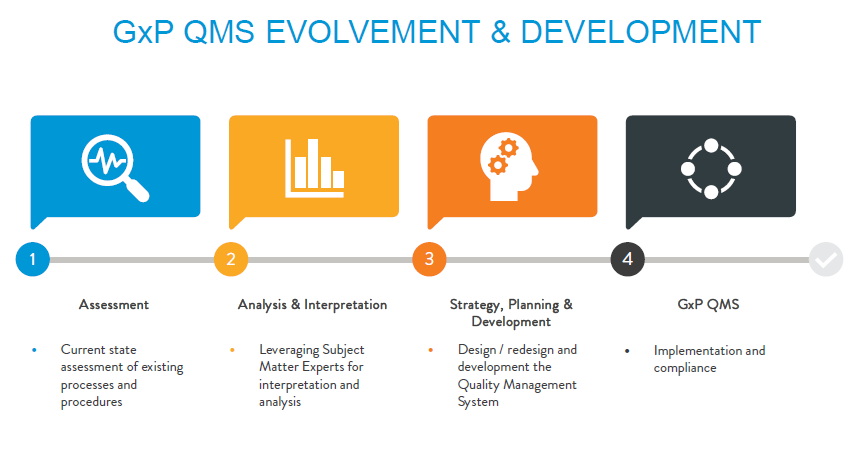

insights
Evolving Your QMS From GMP to GxP to Streamline Clinical Trial Operations
Unpacking GxP
GxP is a collection of quality guidelines and regulations (GLP, GMP, GDP, GCP, and GPvP) created to ensure that biotech and pharmaceutical products are safe, meet their intended use, and adhere to quality processes during manufacturing, control, storage, and distribution. GxP was established by several agencies, including the Food and Drug Administration (FDA), and encompasses many different standards.
This collection of quality guidelines ensures that regulated organizations comply with specific processes and procedures that determine effective research standards for nonclinical laboratory trials, safe human-patient clinical trials, and commercially available products.
GxP’s guidelines focus on three essential outcomes: traceability, accountability, and data integrity. GxP consists of multiple components, such as (but not limited to):
- Good Laboratory Practice (GLP)
- Guidance for nonclinical studies conducted for the assessment of the safety or efficacy of investigational products
- Good Manufacturing Practice (GMP)
- Quality standards for investigational and commercial product manufacturing including packaging, labeling, materials, equipment, personnel qualifications, and training to ensure consistency in production
- Good Distribution Practice (GDP)
- Requirements for investigational product and commercial supply chain including purchasing, storage, transportation, repackaging, and re-labeling
- Good Clinical Practice (GCP)
- Quality standards for designing, conducting, recording, and reporting trials that involve the participation of human subjects for the protection of rights, safety, and well-being of trial subjects
- Good Pharmacovigilance Practice (GPvP)
- Standards for the activities relating to the detection, assessment, understanding, and prevention of adverse effects or any other medicine-related problem to promote the safe and effective use of medicinal products, particularly through providing timely information about the safety of medicinal products to patients, healthcare professionals, and the public
Why a Company’s QMS Benefits Moving from GMP to GxP
As life science companies begin to move from manufacturing-focused operations into clinical trial oversight, they often start to outgrow their GMP Quality Management System (QMS). A QMS covers a set of processes focused on achieving quality policies and objectives to meet customer requirements. A strong QMS system fulfills many objectives, like preparing for regulatory submissions, designing an effective validation system, effective audits, establishing good record-keeping practices, and much more.
We often hear from Quality Leaders that “Our Quality procedures are too GMP specific and do not work as we move into the Clinical space.” As companies move from standard manufacturing operations to first-in-human clinical trials, they’ll need to reframe their mindset to be GxP-focused, which covers all angles of quality components in a much more streamlined way that enables a company to be successful.
Getting there takes time and effort, but these four planning components can offer guidance.
In order to move towards a GxP QMS, organizations will need to make major shifts in their mindset, adopt quality philosophies and standards, overhaul their quality organizational structure, and unify GxP to move beyond silos to a more integrated system that benefits the organization and their Quality teams.
QMS Unification – A Case Study
In this particular case, the company’s GMP was entirely separate from GCP, GLP, and GPvP, and they believed the separation was essential due to the differences from one GxP component to another.
After observing this company’s structure, all GxPs were placed under one umbrella and all Quality employees reported to the same Quality Leader. As a result, transparency was developed for the entire quality team, silos were eliminated, and processes were streamlined and more efficient. This was valuable to the organization because they used one QMS for their entire GxP which streamlined efficiency and operations for the entire Quality department.
**
From new company formation and early development through commercialization, Halloran is your end-to-end, integrated, full-service partner.
Please contact us to learn more about our Quality Services.





